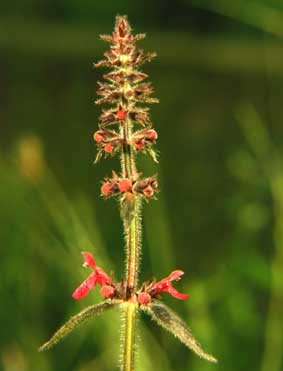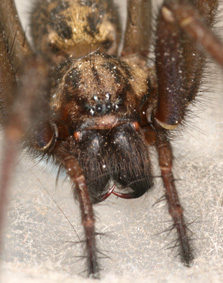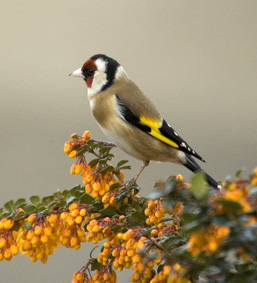|
|
|
|
|
|
|
|
|
|
|
|
|
|
|
|
|
|
|
|
|
|
|
|
|
|
|
|
|
|
|
|
|
|
|
|
|
|
|
|
|
 |
 |
Fill-in flash can also be used to good effect in other circumstances. With the Brittle Bladder-fern Cystopteris fragilis on the left, which was deep under an overhang of limestone rock, I kept the flash at a low angle to the frond, so that the flash light was at a grazing angle, highlighting the sori (spore-bearing structures) which otherwise would not have stood out at all in the flat ambient lighting. The daylight exposure was somewhere around 30 seconds. Hairy plants like the Hedge Woundwort Stachys sylvatica, shown right, are best photographed backlit to highlight the hairy stem and leaves. Here I have photographed into the light, then used flash to give detail to the front of the plant, which otherwise would have been dull and underexposed. |
 |
 |
Things move on: I have now gone digital. I wish I could have fitted a digital back to my Rollei, but it is so expensive - so much so that the digital back comes with the latest 6008 body - and all my lenses would have to be modified to work with the new body. So I decided on the Canon 300D, then upgraded to the 400D then the 500D. I now have the Canon 6D and 5D Mkll. The 5D and 6D, with their "live view", are particularly suited to macro work. They also are wireless flash enabled and I use the Canon ST-E2 transmitter for this, giving me lots of flexibilty in the positioning of the flash gun(s). This has meant a much smaller and lighter outfit, compared to the Rollei, including the tripod - now a Vanguard Alta Pro 263AT rather than the Benbo - which is a relief, especially on an ageing back! While I absolutely loved the Rollei outfit, I have not regretted the change. One major benefit of going for the smaller camera is that I can carry lenses that will allow me to take close-ups and also to photograph wildlife at a distance. With the Rollei, I did not have any telephoto lenses, so when out with this camera, could only use it for close-up or landscape. The image stabilised Canon telephoto lenses mean that I can grab hand-held shots that otherwise would have been impossible. The digital images that I am getting are superb - the House Spider on the left was taken using a Tamron 90mm macro with a ring flash, while the Goldfinch was caught by the 100-400 IS USM Canon set at 400mm, both were hand held. The ability to assess the image immediately is such a great advantage and I am also willing to try shots that I would not have attempted with film because with digital there is no waste. Another benefit of these cameras is the ability to control them remotely. I use the CamRanger, which allows remote view and camera controls up to 50 metres away, so I can set up the camera and retire to a less visible spot. The Great Spotted Woodpeckers at the nest sites were obtained this way. |
 |